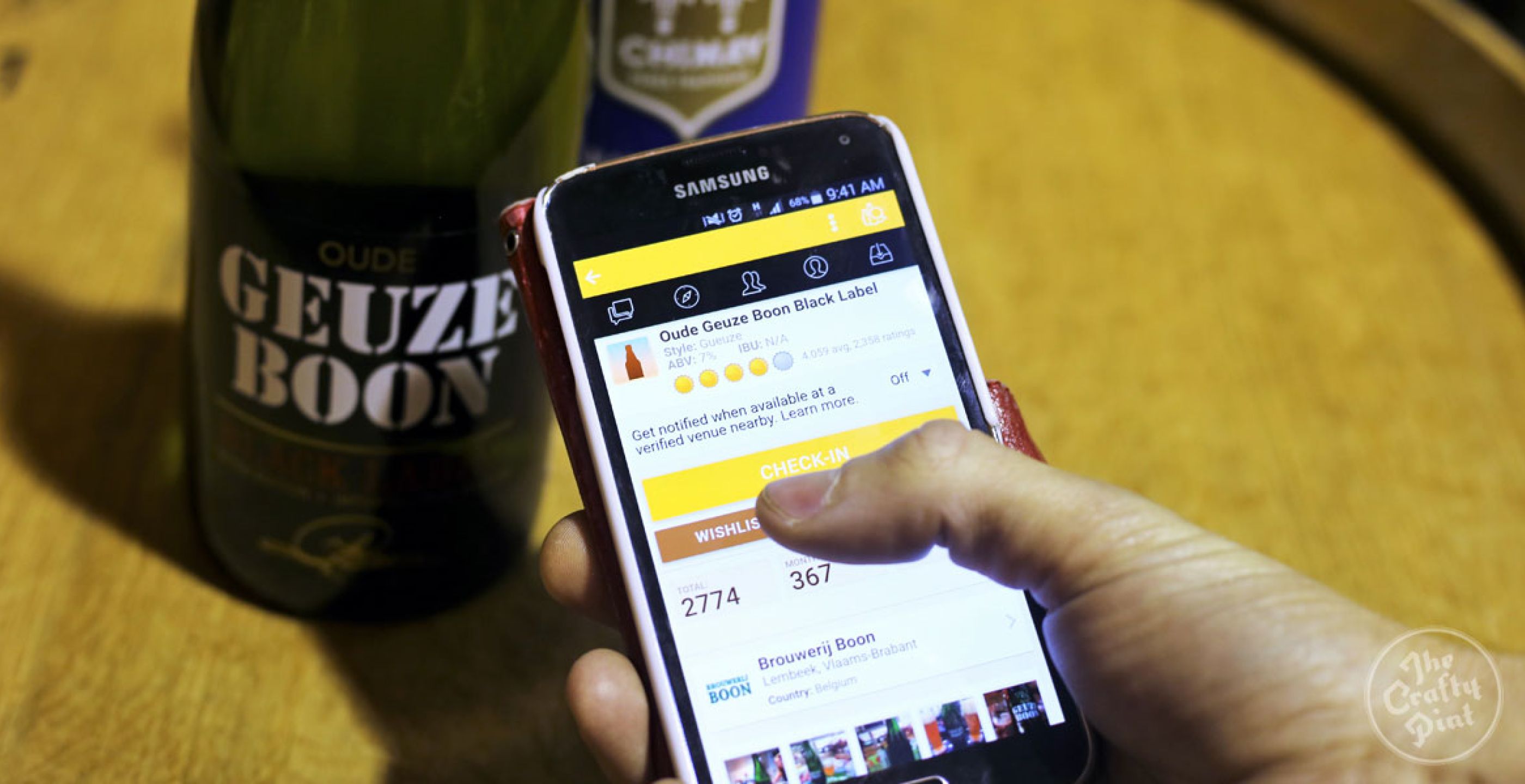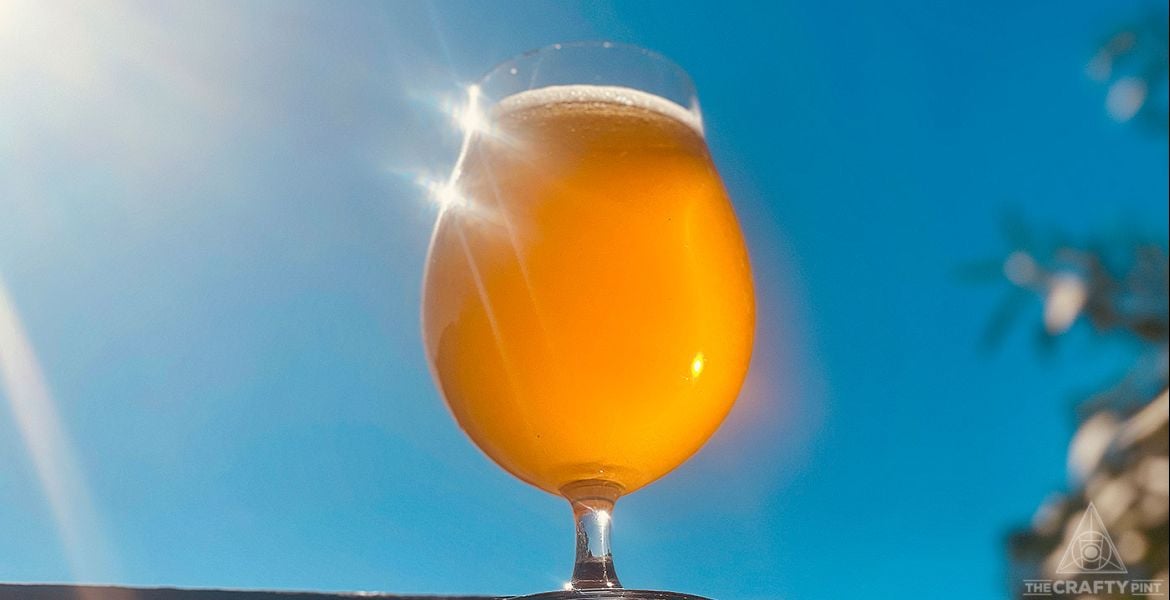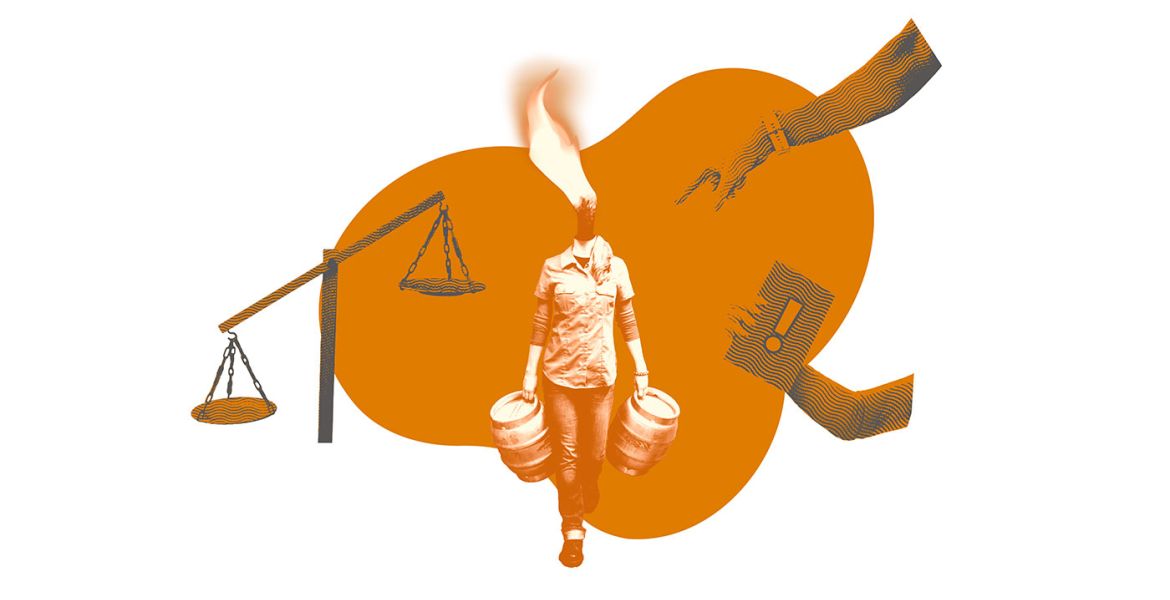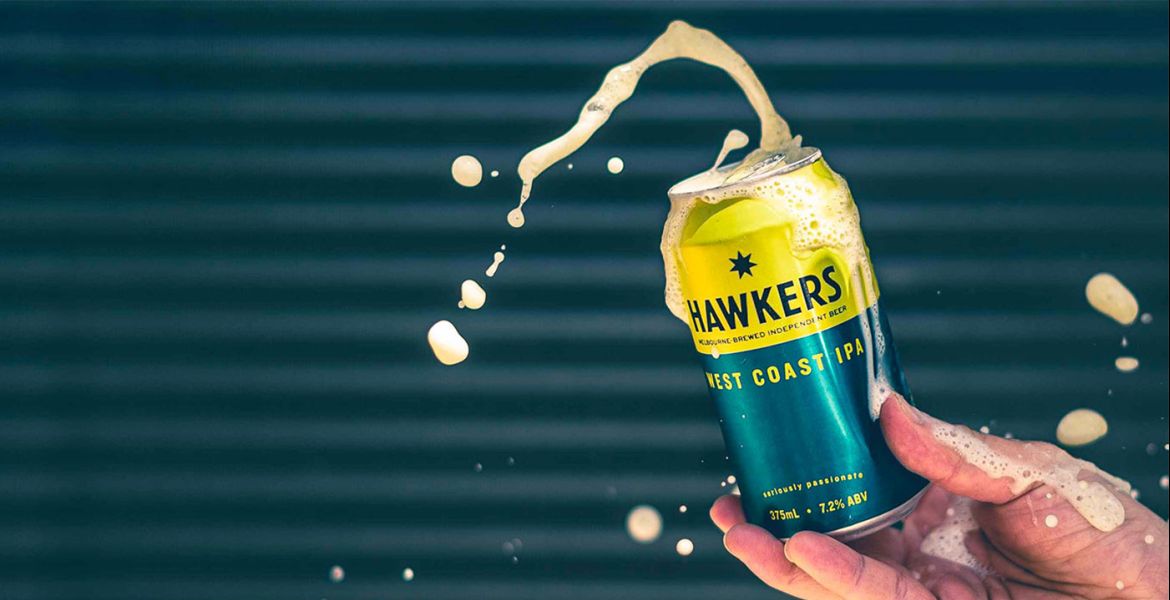As beer collecting and rating sites gain traction in the craft beer community to the point that it’s a borderline addiction for some, it seems all too apt that Pokémon has returned to the collective consciousness. Rare beers, barrel-aged versions and special releases abound, and the Pokémon battle cry of "Gotta catch ‘em all” gains new meaning as beer lovers seek out the hottest new brew like a Dragonite in the foothills of Lilydale.
With social media beer apps and websites such as Untappd and RateBeer helping to make the hunt for the new ever more urgent, Kerry McBride explores the impact they can have on the industry as a whole.
Tomorrow, in part two, we address the issue with the brewers, the drinkers, the bar managers, and the social media sites themselves to see just how much stock can – or should – be placed in giving a beer five stars with just the click of a button.
In January 2012, before many of today’s Australian craft beer drinkers had so much as tried their first can of Mountain Goat, Sam Calagione of Dogfish Head Brewery posted a scathing response on Beer Advocate after his brewery had been called out for being "overrated".
In it, he said that users on beer rating sites had for too long taken great joy in knocking down breweries that dared to grow. For him, the more these sites became “a soap box for outing breweries for daring to grow beyond its insider ranks, the more [they would] be marginalized in the movement to support, promote, and protect independent, American craft breweries.”
The post, and the discussion it produced about the nature of beer rating, was removed by Beer Advocate not long afterwards for reasons the site would not make clear.
In Australia, the rise of craft beer has brought with it the growth of a new market for sites such as Beer Advocate and RateBeer, as well as the beer rating app Untappd. With more than 3.2 million global users as of April 2016, Untappd has manoeuvred its way into the life of many craft beer drinkers, as evidenced by the number of heads bent over phones at any special beer event.
Users such as Angus Norris of Melbourne say Untappd has opened up a whole new world for them, enabling the easy discovery of rarer beers, and providing a solid base upon which to decide how to spend their hard earned dollars at the closest craft beer store.
Angus has been using the app since 2013 as an adjunct to his blog, Beer O’Clock Australia, where he has been cataloguing and rating his beer choices since 2011. With more than 4,500 Untappd check ins covering almost 2,500 beers, it is safe to say that Angus is an enthusiastic convert to the benefits of beer rating.

“I use it to refer back to see if I liked something,” he says. “When you’ve had that many it can be tricky to remember, so I’ll use it in store to see if I’ve had something before or to see if it stands up against others of its style.
“If you’re going to blow $30 on a bottle of something special, it’s nice to know it’s at least halfway decent first.”
While he primarily uses Untappd, RateBeer also serves as a useful tool by which to keep abreast of new beers or to find more in depth reviews of a beer he is considering buying.
While Angus uses style-based ratings when he checks in a beer, he says there are many who don’t, leading to some wild variations in how a beer might rate. A classic pilsner or subtle pale ale, for instance, would never reach the same heights as the latest barrel-aged imperial stout or triple IPA.
That issue is one Hawkers founder Mazen Hajjar is all too familiar with, as the young Victorian brewery produces pale ales, saisons and IPAs to style. Their focus, he says, is on good beer, rather than chasing trends.
“We don’t want to be the cool brewery, we don’t want to be the hipster brewery, we don’t want to be about what’s cool and new. We just want to be about good beer,” he says.
He has seen feedback on their beers – that their IPA was good, but “too bitter to drink a slab of”, or that their pilsner is the best someone has ever had, but only worthy of three stars. For Mazen, the inconsistencies of everybody with an internet connection being able to pass judgement on a beer means any such feedback needs to be taken with a shovel full of salt.
“I understand you want the barrel-aged imperial stout, or the triple IPA, I get it. But if you’re going to be judging beers you have to judge a beer as what it is,” he says.
“You can’t say, ‘This pilsner doesn’t have enough hop character, therefore it’s three stars’. That’s why we kind of ignore it and do our thing. Hopefully enough people don’t care about cool, and just want the real deal.”
That deference to big IPAs and barrel-aged stouts rings true in the statistics, with the top ten Australian beers on Untappd featuring the likes of Boatrocker’s Ramjet barrel-aged imperial stout, Feral’s Tusk imperial IPA, Riverside’s 777 imperial IPA and Moon Dog’s Jumping The Shark 2015 rye whisky barrel-aged imperial stout.
Tusk, Ramjet and Jumping The Shark also make appearances in RateBeer’s top picks, alongside Mornington’s Russian Imperial Stout, Pirate Life’s IIPA, and Nail’s Clout Stout. There’s no doubting these are cracking beers, but you can’t help feel their magnitude allows them to tower over other fantastic yet less demonstrative beers on such sites.
In contrast, this year’s AIBA champion beer was Gage Roads’ Little Dove New World-style pale ale, while the CBIA Craft Beer Awards last week, both judged by panels of experienced brewers and beer experts, crowned Little Creatures Pilsner as its champion.
That disconnect between formal beer judging and what the internet might crown as the best is clear at a venue such as Carwyn Cellars in Melbourne’s north, where the pursuit of big hop monsters and the darkest of stouts reaches its zenith. The Carwyn team make a point of maintaining an exciting tap list, bringing in sought after international beers and often tapping brews that have never been poured in Australia before.
Venue manager Ben Duval says beer apps and rating sites have made significant inroads at Carwyn, as their special events are filled with people busy checking in their beers or lining up before the venue even opens to get a glass of that unicorn beer just about to be tapped.
“It’s made a huge impact, and more and more all the time,” he says. “We especially see it when we have special events or brewery tap takeovers – that people are more engaged with their phones than they are with each other. They eventually look up and start talking to each other.”
There are clear benefits in being able to track the climbing number of beers a beer nut may have consumed, Ben says, but the risk of groupthink can easily set in with some of the more sought after releases.
“When we had Founders Kentucky Breakfast Stout it was nuts. When we put the keg on there was a line into the next room of the bar for half an hour.
“The overwhelming reaction was that it lived up to expectations, which didn’t surprise us. It’s a big, ballsy imperial stout. But we had the Dogfish Head 90 Minute IPA in here and to us it tasted a bit tired, but people were still loving it. You can’t account for everyone’s individual tastes with five stars.”

Mazen came into close contact with the effects of groupthink when he was running a series of blind tasting panels at his previous brewery, 961 Beer in Lebanon. Keen to get a feel for the market on light lagers, they conducted 16 blind tasting panels pitting craft beers against the likes of Heineken and Stella Artois.
Consistently, one “vocal shithead” would make themselves known at the beginning of each panel as a voice of authority for the group. Without fail, the group would then defer to their perceived knowledge on whether a beer was any good or not.
But, during one session, a panellist went to the bathroom during the assessments. The group voted on the beers without him, following the lead of the “shithead” of the day. But the man who had been absent from the discussion voted in a completely different way to the rest of the group.
It was a clear demonstration of the potential impact that beer discussion or peer pressure can have on a person’s ability to judge a beer for themselves, whether in person or online, Mazen says.
“Absolutely these social networks have influence on people. Is it a positive influence? Is it an extension of peer pressure? It’s hard to say. It’s that belief that if everyone else loves this beer, I must be an idiot not to.”
Even as an Untappd devotee, Angus knows the risks of not looking beyond the craft beer bubble for quality review.
“There’s a lot of people who won’t rate something really negatively. I can understand that, because there’s a lot of effort that goes into making these small production beers, so you don’t want to completely pound them for it.
“It’s certainly more positively skewed than it would be if it was an anonymous environment.”
He tries his best to combat this by trusting in the reviews of those he knows well, and by checking the trends of the ratings of someone he might be looking at, just as an educated reader might assess the views of different news organisations based upon their political persuasion. If users regularly vote all IPAs poorly, or seem to misunderstand sours, then their review can be safely disregarded.
“The main thing, though, is that’s it’s fun. It opens you up to new beers, and is an incredible tool when you’re starting out, as long as you don’t take it too seriously.”
Not taking it all too seriously seems to be the best way forward, especially for someone like Mazen who would like to see a beer judged for itself, outside of the powers of marketing, five star reviews on a beer website, or even awards.
“Why should I give a shit whether you like something or not?” he says. “Forget the packaging, forget the reviews, let me decide for myself.
“We’ve replaced the girls in bikinis of the beer adverts in the ‘60s and ‘70s with a different kind of bullshit, when the whole craft beer message is that it should be about the liquid in the glass.”
The Crafty Approach

Given that we write about beers on The Crafty Pint, it seems appropriate here to explain our approach. It's something we dealt with at length two years ago in an article addressing the rating of beers (which you can read here).
Our approach has remained steadfast since then. We write about rather than rate beers, preferring to describe both the story and background to a beer as well as its characteristics; that way, readers can decide if it sounds like the sort of beer they might like (and, hopefully, they are educated and entertained along the way).
Why? Despite the fact that the site's founder has probably sampled more Australian beers in the past few years than anyone else on the planet and spends a lot of time in the company of the country's best brewers and experts – and the fact that the wider Crafty team is immersed in craft beer – we don't feel this gives us any sort of authority to tell you what you should like. Sure, we've probably got a good idea when a beer is well made or, conversely, faulty but that doesn't mean that all of our readers, with their different tastes and palates, will feel the same.
There are occasional exceptions. If a beer is outstanding, we'll allow that to come across in the words. And what if a beer is terrible? On the few occasions this has happened, we've chosen to contact the brewers directly and offer them feedback in private. More than once, this has led the recall of a batch; in one case, the brewery team carried out a detailed examination of the brewery and discovered an issue with the elements in their kettle, replaced them and the next batch was improved immeasurably. In such cases, we feel there's greater benefit in telling a brewer in private than slating publicly what could be a one-off issue. If there are brewers releasing bad beer consistently, we hope they're not among those listed on the site.
The only place you do find rating of sorts is in our Blind Tasting Panels. Here, the judging of beers is approached in competition conditions by a panel so the results have added weight in numbers. We also provide feedback to brewers, which isn't always pleasant when their beers fare badly and we've not met them in person!
So that's how we do it. You can look out for the results of Part II of our IPA Blind Tasting next week and check out the second part of Kerry's examination of beer collecting here.















